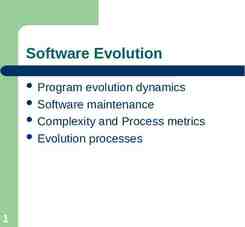Narrowing the Tax Gap James B. Mackie III Director, Revenue Estimating
31 Slides59.00 KB
Narrowing the Tax Gap James B. Mackie III Director, Revenue Estimating Division Office of Tax Analysis U.S. Treasury 1
Disclaimer Any views or opinions are my own and do not necessarily reflect the official views of the U.S. Treasury. 2
Bottom Line The tax gap is a serious multi-dimensional problem. The tax gap can be reduced but not eliminated. The Administration is committed to working with Congress to reduce the tax gap without unduly burdening compliant taxpayers. The Treasury has proposed a multi-pronged approach to reducing the tax gap and has made specific Budget proposals consistent with this strategy. – Some budget proposals have been enacted. 3
Tax Gap Background 4
What is the Tax Gap? Gross tax gap. The difference between the amount of tax that taxpayers should pay under the tax law and the amount they actually pay on time. – Estimate of 345 billion in tax year 2001, 83.7% voluntary compliance rate. Net tax gap. Gross tax gap less taxes that were paid voluntarily but late and recoveries from IRS enforcement activities. – Estimate of 290 billion in tax year 2001, 86.3% net compliance rate 5
Sources of the Tax Gap Caused by many kinds of errors and omissions. Intentional evasion and unintentional errors both contribute to the tax gap. – Tax complexity leads to unintentional errors and creates opportunities for intentional evasion. – Better taxpayer service can reduce unintentional errors. – Can’t tell how much of the gap is from unintentional errors. Over 80% of the gross tax gap is from underreporting of income. – Over 40% is underreporting of net business income (individual income tax and self-employment tax). About 10% of the gross tax gap is from underpayment of tax and about 10% from nonfiling. 6
Information Reporting and Withholding Noncompliance is highest among taxpayers whose income is not subject to third party information reporting or withholding. – Withholding. Wages are underreported by 1%. – Information reporting. Interest income, dividends, social security benefits, pensions, and unemployment insurance are underreported by 4.5%. – No information reporting. Net income from proprietorships, rents, and royalties is underreported by 54%. 7
Information on the Tax Gap is Dated and Incomplete Identifying the sources and levels of noncompliance is critical to designing and implementing effective remediation. The main source of information is the National Research Program (NRP), which has compliance data from 2001. NRP looked only at individual income and selfemployment taxes. Estimates of compliance for other taxes (e.g., corporate income tax) are based on information that is much older – studies are 20 years old. – Study of S corporation compliance is in final stages. Excise tax compliance has never been studied. 8
Reducing the Tax Gap vs. Raising Revenue Reducing the tax gap is not the same thing as raising revenue. – Some tax changes are clearly targeted towards noncompliant taxpayers and the tax gap, e.g., increased information reporting, penalties, closing specific illegal tax shelters. – Some tax changes raise revenue from compliant taxpayers and also reduce the tax gap, e.g., eliminating the home office deduction or the charitable deduction. – Some tax changes simply raise revenue without affecting the tax gap (compliance). 9
Can the Tax Gap Be Closed? The tax gap can be narrowed, and it is important to do so. – All Americans should pay their fair share of taxes. Expectations have to be realistic. The tax gap is a longstanding, persistent problem. – Compliance rates are about the same as 20 years ago despite large changes in tax law and in tax enforcement. “There is no low-hanging fruit in this area.” former IRS Commissioner Lawrence Gibbs. – IRS already gets the easy enforcement dollars. 10
Can the Tax Gap Be Closed? (cont.) Closing the tax gap completely seems infeasible if not impossible. It would require draconian and costly measures. – Universal audits. – Very severe penalties. – High burden on compliant taxpayers. – Increase tensions between taxpayers and the government. Large reductions in the tax gap would be VERY difficult to make and might not be worth the cost imposed on the IRS and on taxpayers. – Same problems as completely closing the tax gap. 290 billion per year is a large overstatement of the achievable reduction in the tax gap. – Improvement in the government’s net fiscal position would be smaller because of the cost of collection. 11
Treasury’s Tax Gap Strategy: Four Principles A Comprehensive Strategy for Reducing the Tax Gap, OTP, September, 2006. (1) Address unintentional taxpayer errors and intentional taxpayer evasion. (2) Target specific sources of noncompliance. (3) Combine enforcement with taxpayer service. (4) Respect taxpayer rights and balance enforcement against taxpayer burdens. 12
Seven Specific Strategic Components (1) Reduce evasion through legislation and regulation. (2) Commit to multi-year compliance research. (3) Improve information technology. (4) Improve IRS compliance activities. (5) Enhance taxpayer service. (6) Simplify the tax law. (7) Coordinate with partners and stakeholders. 13
Implementing the Treasury Strategies Made some progress on all fronts. 14
Budget Proposals: Legislation to Reduce Evasion 16 specific proposals in the FY 2008 Budget. – Expand information reporting (7). Three proposals account for most of the revenue. Business payments to corporations: File an information return for payments summing to 600 or more to a corporation. Basis on security sales: Brokerage houses, mutual funds, asset managers, and fiduciaries would be required to report adjusted basis on sales of publicly traded securities. Merchant payment card reimbursements: Card processors must report to the IRS gross reimbursement payments made to merchants. 15
Budget Proposals: Legislation to Reduce Evasion (cont.) Improve compliance by business (3). – These include a proposal to amend the collection due process rules for employment taxes that has been enacted in modified form by HR 2206. Strengthen tax administration (3). – Make willful failure to file a return a felony. Strengthen penalties (3). – Two have been enacted in modified form by HR 2206. Increase and extend to other types of returns penalties on tax preparers for filing erroneous returns. (Issues: MLTN standard, no transition relief.) Create an erroneous refund penalty. – HR 2206 also increased the penalty for writing bad checks to pay taxes (not a Budget proposal). 16
Budget Proposals: Legislation to Reduce Evasion (cont.) Modest revenue pick-up ( 29 billion over ten years). – Most revenue from information reporting. – Proposals focus on noncompliance, not raising revenue by changing the baseline against which compliance is measured. – Respectful of taxpayer rights and burdens. – “No low-hanging fruit.” 17
Sidebar: Treasury Revenue Estimating for Enforcement Initiatives Two types of revenue effects. – Direct: revenue immediately related to specific enforcement programs, e.g., penalties collected and revenues from audits. (These are counted as revenue from IRS enforcement.) – Indirect: revenue from changes in voluntary compliance caused by the enforcement initiative. 18
Sidebar: Treasury Revenue Estimating for Enforcement Initiatives (cont.) Three types of enforcement initiatives. Legislative initiatives. – Statutory changes to administrative provisions of the IRC. – Score direct and indirect revenue effects (although the effects can be small). Management initiatives. – – – – Redeploy existing enforcement resources to increase efficiency. Do not score. Historical productivity increases already in baseline tax receipts. Management decisions are made too frequently to track and evaluate. 19
Sidebar: Treasury Revenue Estimating for Enforcement Initiatives (cont.) Resource initiatives. – Net additions to current service levels of resources applied to IRS enforcement programs. – Occasionally (rarely) have scored direct effects. – Little information on which to base indirect effects. – Generally only large changes would be expected to yield measurable revenue. – “Descore” IRS funding reductions – controversial. – Interaction of resources and legislative initiatives. 20
Budget Proposals: Legislation to Reduce Evasion (cont.) Rejected proposals (too draconian) – Require individuals to file 1099s for transactions with doctors, auto mechanics, dry cleaners and other service providers. – Require cash transactions to be done with a payment card or check and require issuer/bank reporting to IRS. – Substantially increase the number of IRS agents and audits. 21
Budget Proposals: Legislation to Increase Simplicity Simplify the tax treatment of families and savings incentives. – LSA, RSA, ERSA. – Clarify definition of child, simplify EITC eligibility, reduce complexity of refundable child tax credit. These help to reduce the complexity that causes unintentional noncompliance. 22
Other Budget Proposals 410 million in new IRS funding aimed at the tax gap. – Additional compliance research. – Investment in information technology. – Enhancement of enforcement activity. – Improvements in taxpayer service. 23
Other Budget Proposals: Additional Compliance Research New studies for the corporate tax, employment tax, partnerships, and excise taxes. Update the 2001 National Research Program (NRP) study. – IRS just announced that will begin these studies in the fall. – Multi-year rolling methodology will provide regular updates of the data. New studies of the effect of IRS taxpayer service on compliance. 24
Other Budget Proposals: Information Technology Upgrade infrastructure. Enhance IT security. Continued work on Customer Account Data Engine, Account Management Services, Modernized e-File, and Common Services Projects. 25
Other Budget Proposals: Enhanced Enforcement Increase audits of high-risk small business tax returns and step up collections and prosecutions. Expand document matching. Increase examination for large complex business returns, foreign residents, and smaller firms with international activity. Withhold refunds for delinquent taxpayers. Increase oversight to help prevent third parties from using tax exempts to reduce taxes. Increase criminal tax investigations. 26
Other Budget Proposals: Enhance Taxpayer Service Expand voluntary income tax assistance programs directed towards low income, elderly, limited English proficiency, and disabled taxpayers. Improve telephone and Web site services recommended by the Taxpayer Assistance Blueprint. 27
Tax Regulations: Increase Compliance Targets specific areas of noncompliance. Clarifies tax law and increases voluntary compliance. Recently published guidance will improve compliance. – Transfer pricing: cross border services. – Foreign tax credit: separation of credit from income. – Reportable transactions rules (tax shelters): create “transactions of interest” category. 28
Partners and Stakeholders Public roundtable in March – Hosted by Assistant Sec. Solomon and Commissioner Everson. – Insights. Identify specific causes of tax gap and target them for reform Remedies should not impose unreasonable burdens on compliant taxpayers Simplify the tax code Manage expectations – no solution is perfect Work with Congressional staff. – Discuss and refine legislative proposals. Increased information sharing with foreign countries: continually updating and expanding tax exchange information agreements (Brazil, 3/2007) and renegotiating tax treaties. 29
Current Work Tax gap project is ongoing. Treasury is working actively to determine the next steps consistent with the principles and strategies outlined last September. 30
Bottom Line (again) The tax gap is a serious, multi-dimensional problem. Tax gap can be reduced but not eliminated. The Administration is committed to working with Congress to reduce the tax gap without unduly burdening compliant taxpayers. The Treasury has proposed a multi-pronged attack on the tax gap and has made specific Budget proposals consistent with this strategy. – Some have been enacted. 31




































